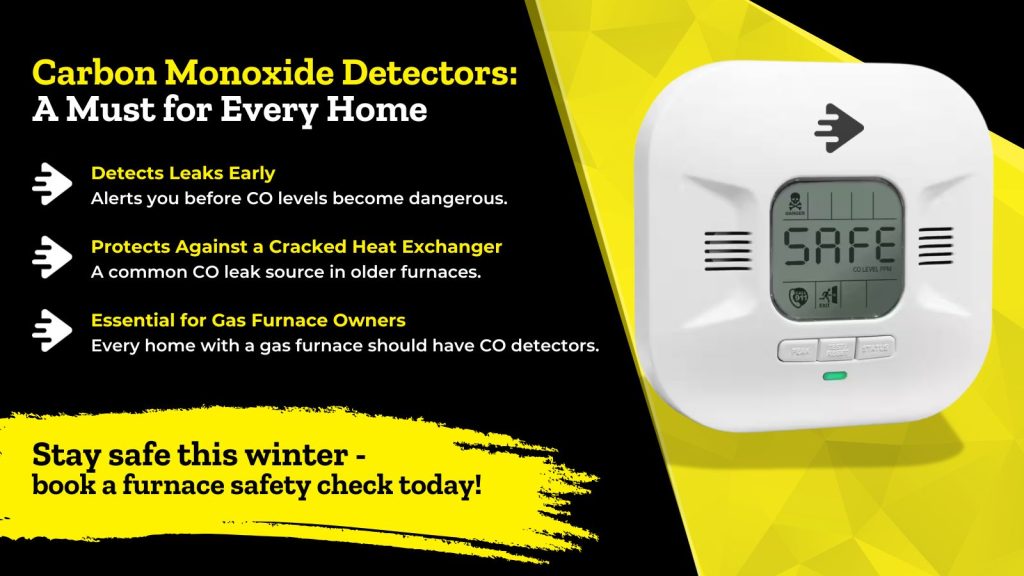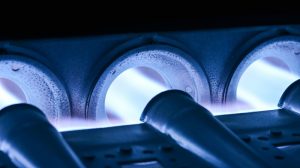Safety is a top priority for homeowners. Gas furnaces in Champaign, IL are an efficient and reliable way to stay warm during the colder months, but as with any fuel-burning appliance, they require proper maintenance and built-in safety measures to ensure they operate safely.
Fortunately, modern gas furnaces are equipped with a variety of safety mechanisms designed to prevent hazards such as gas leaks, carbon monoxide exposure, and overheating. In this guide, we’ll walk you through these essential safety features and explain why regular maintenance is key to keeping your gas furnace running safely and efficiently.

Essential Safety Mechanisms in Your Gas Furnace
1. Flame Sensor
The flame sensor is one of the most critical safety components in your gas furnace. Its job is to detect whether a flame is present after the gas valve opens. If the sensor does not detect a flame, it will shut off the gas supply to prevent unburned gas from accumulating and causing a potential explosion or fire hazard. Over time, flame sensors can become dirty or corroded, making regular cleaning and inspections necessary.
2. Limit Switch (High-Temperature Limit Switch)
The high-temperature limit switch is responsible for preventing the furnace from overheating. If the furnace gets too hot—whether due to a clogged filter, blower motor failure, or another issue—the limit switch will shut down the system to prevent a fire hazard. If you notice your furnace frequently shutting off unexpectedly, this could indicate a problem that requires professional attention.
3. Pressure Switch
A pressure switch is a crucial safety device that ensures the furnace’s venting system is operating correctly. It detects whether the inducer motor is running and that proper airflow is maintained through the venting system. If it senses a blockage or improper airflow, it will prevent the furnace from igniting, stopping carbon monoxide or combustion gases from backing up into your home.
4. Rollout Switch
A rollout switch is another essential safety feature that monitors for flame rollout—when flames extend beyond the burner area, often due to a blocked heat exchanger or ventilation issue. If the rollout switch is triggered, it will shut off the furnace to prevent fire risks and gas leaks. This switch should never be bypassed, as it is a critical line of defense against potential furnace-related dangers.
5. Carbon Monoxide Detectors
While not built into the furnace itself, carbon monoxide (CO) detectors are an essential part of home safety when using a gas furnace. CO is a colorless, odorless gas that can be deadly if inhaled in high concentrations. A properly maintained furnace should not produce dangerous levels of CO, but issues like a cracked heat exchanger or blocked venting can lead to leaks. Having CO detectors installed in your home ensures you’re alerted if there’s ever a problem.
Regular Maintenance is Key to Furnace Safety
Routine maintenance is the best way to ensure that all these safety mechanisms function correctly. At Edelman, our expert technicians perform thorough inspections and tune-ups to check for:
- Dirty or faulty flame sensors
- Malfunctioning pressure or limit switches
- Blocked venting or airflow issues
- Cracks in the heat exchanger
- Worn electrical components
By scheduling annual furnace maintenance, you can catch potential safety hazards before they become serious problems. In addition, professional servicing improves your furnace’s efficiency, extends its lifespan, and helps lower energy bills.
If your furnace hasn’t been inspected recently, or if you’ve noticed any unusual performance issues, don’t wait for a breakdown. Call Edelman today to schedule a professional furnace inspection and tune-up.

